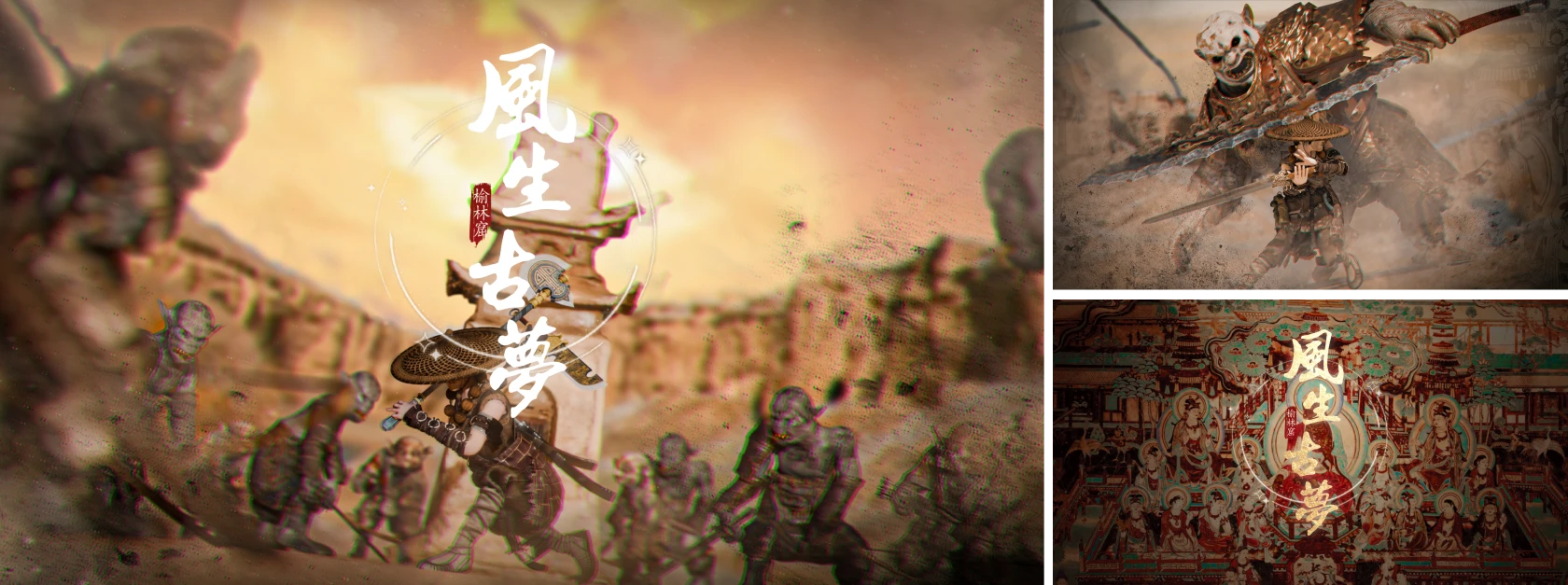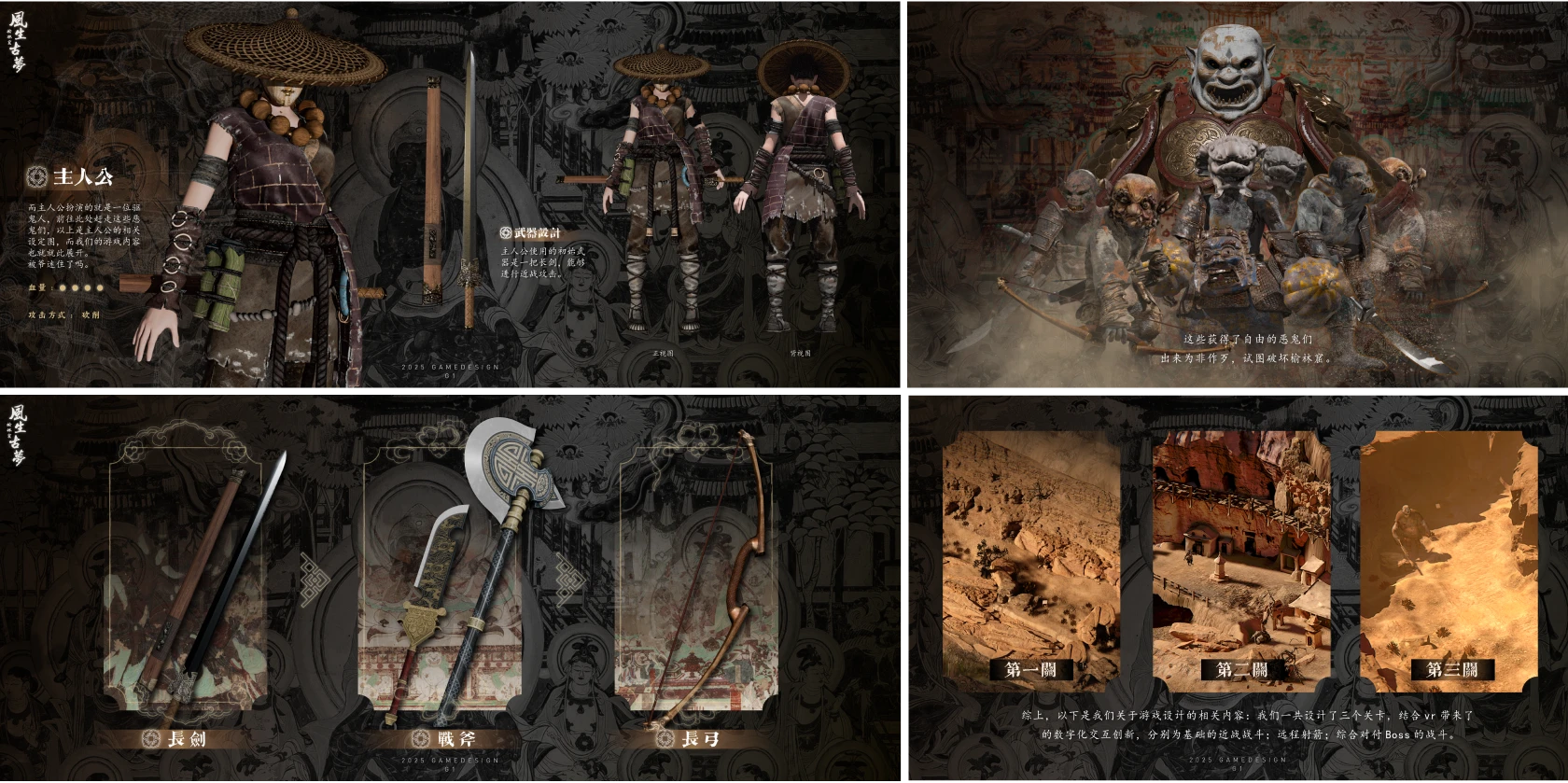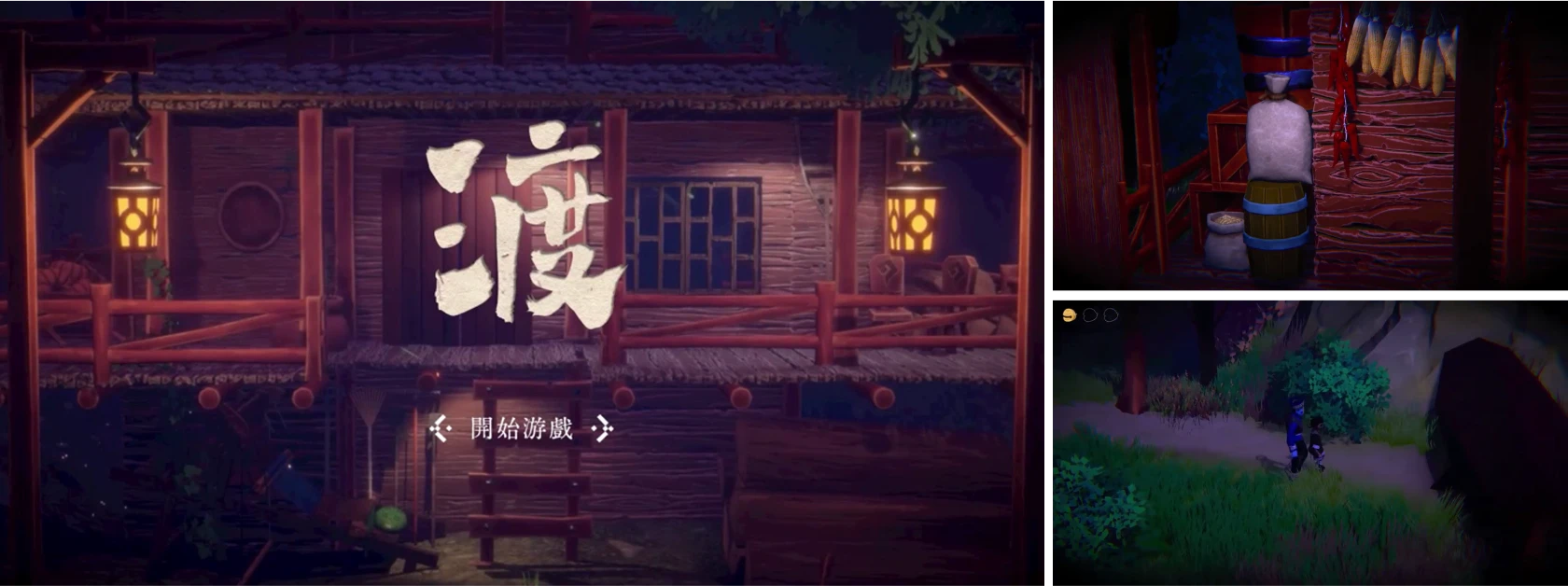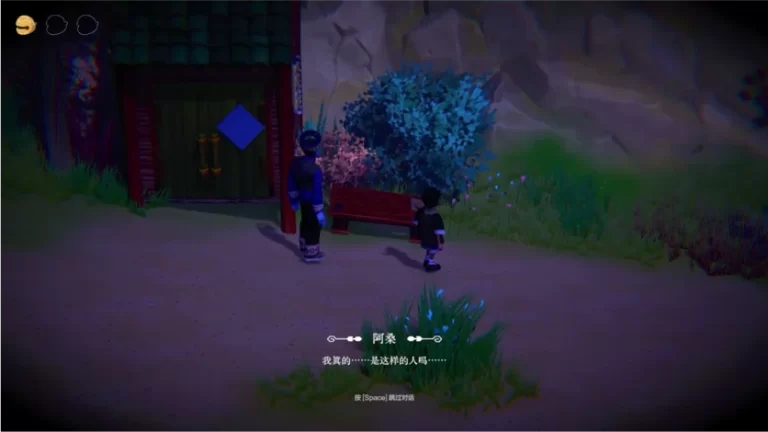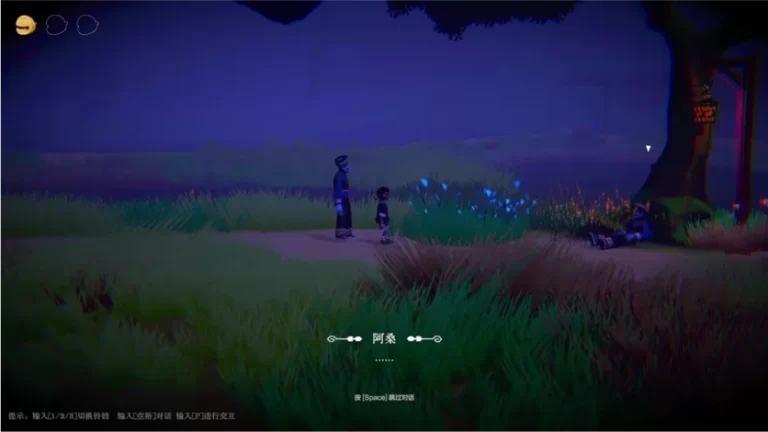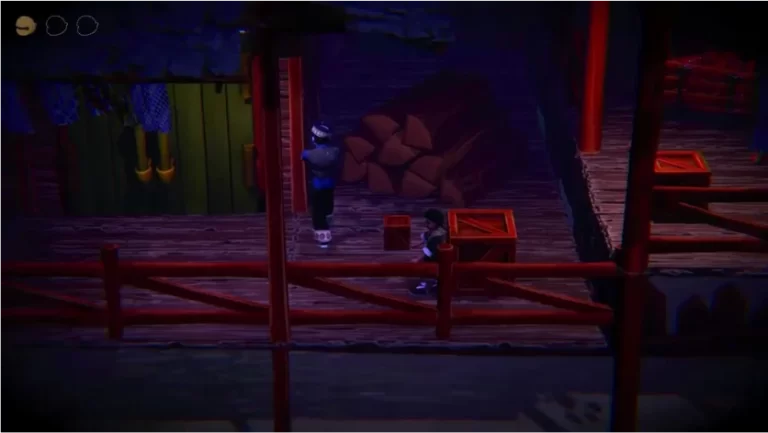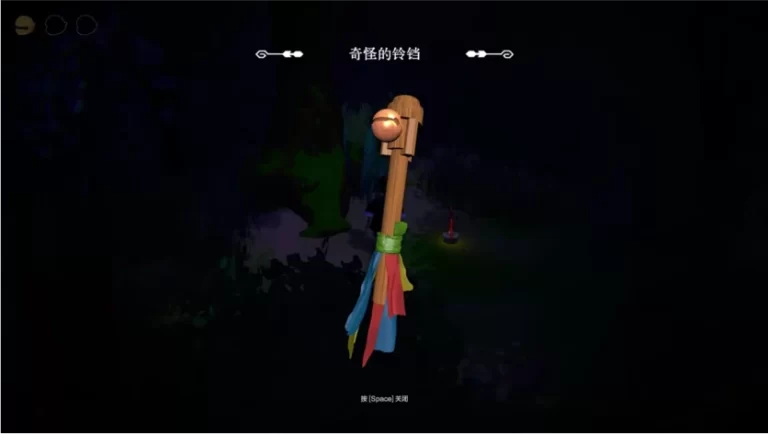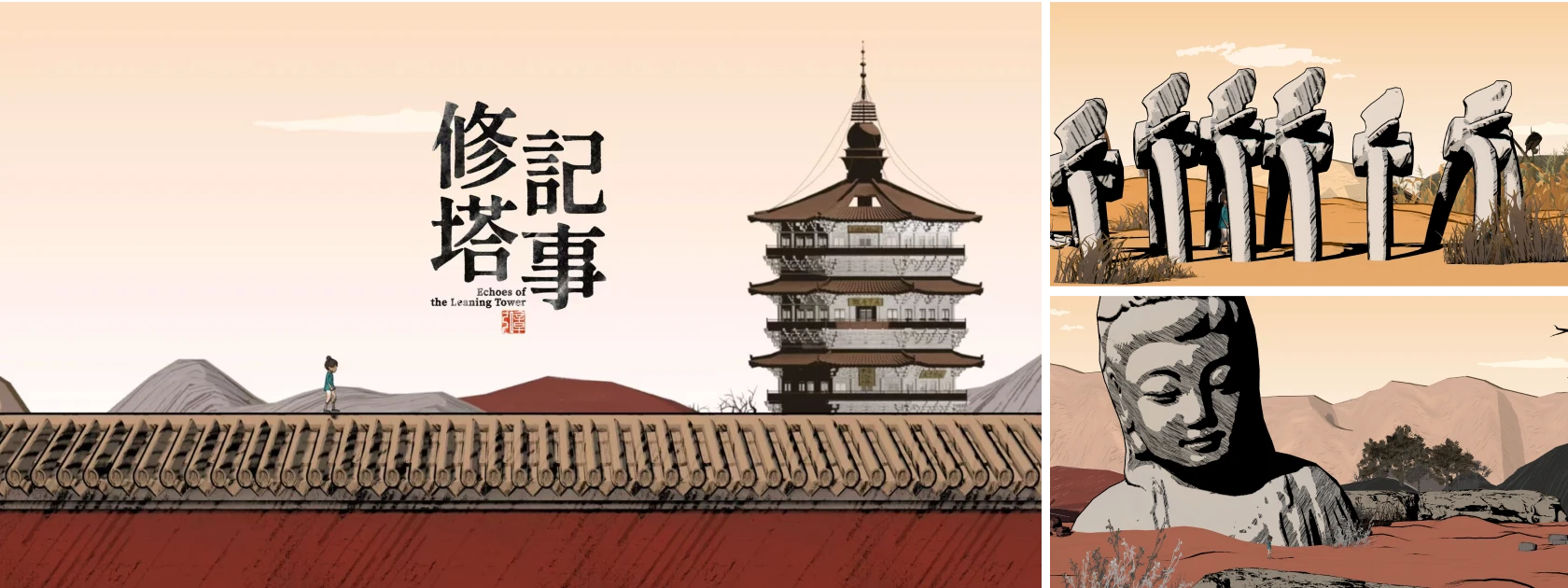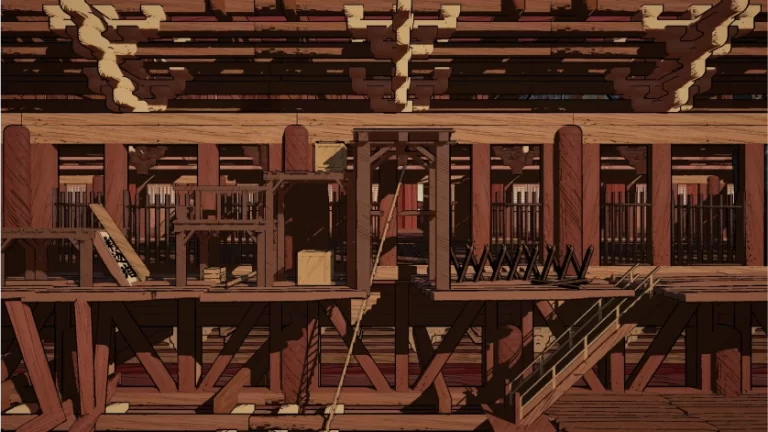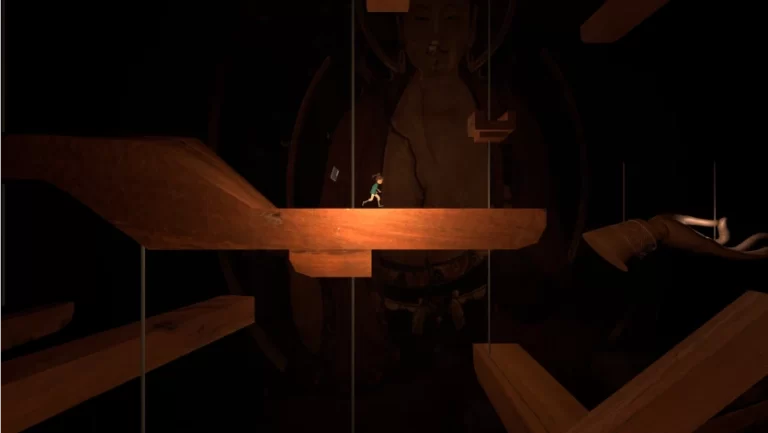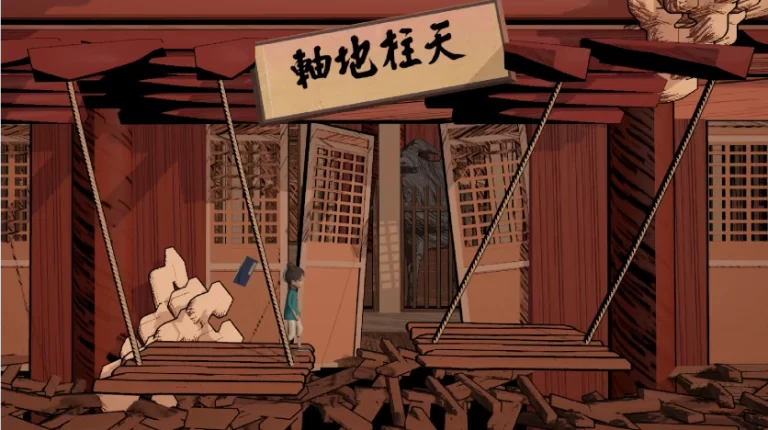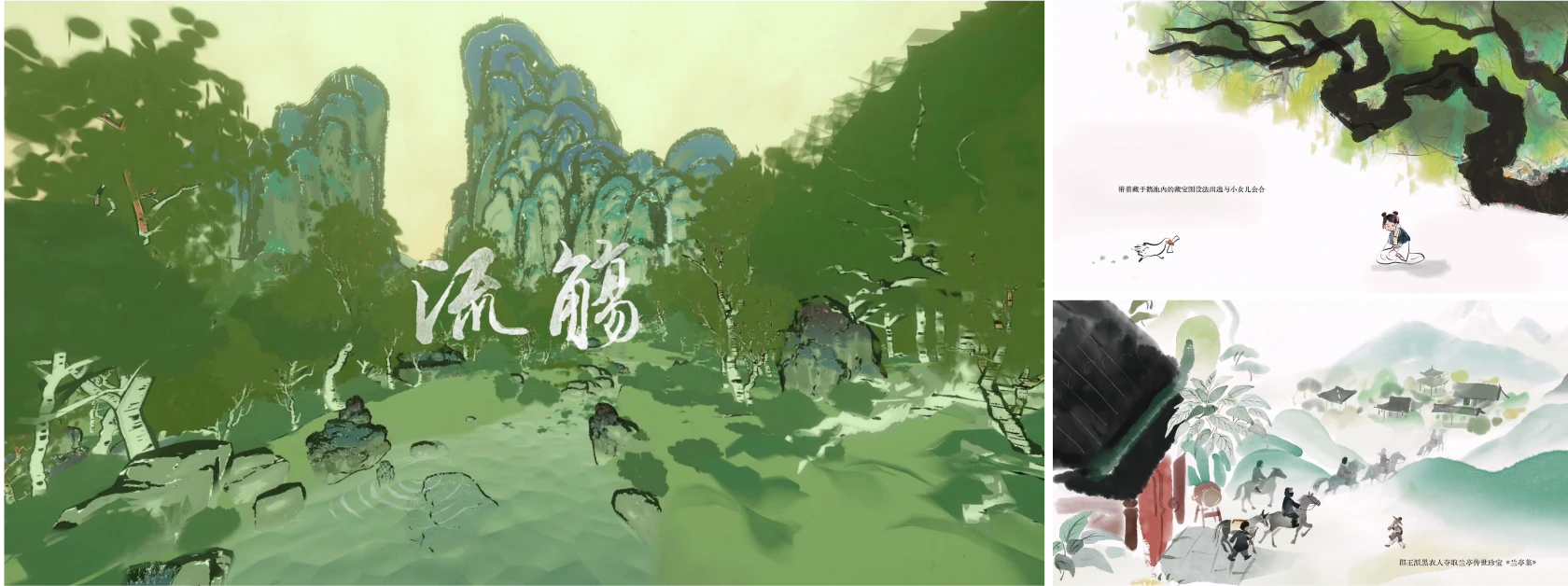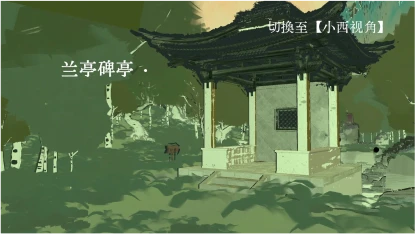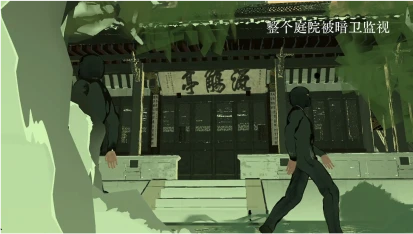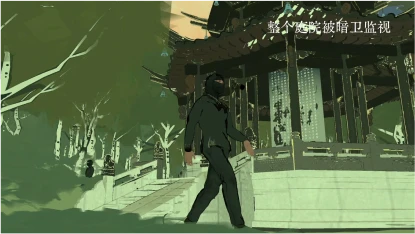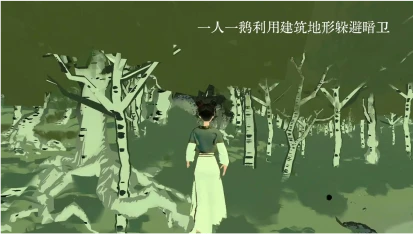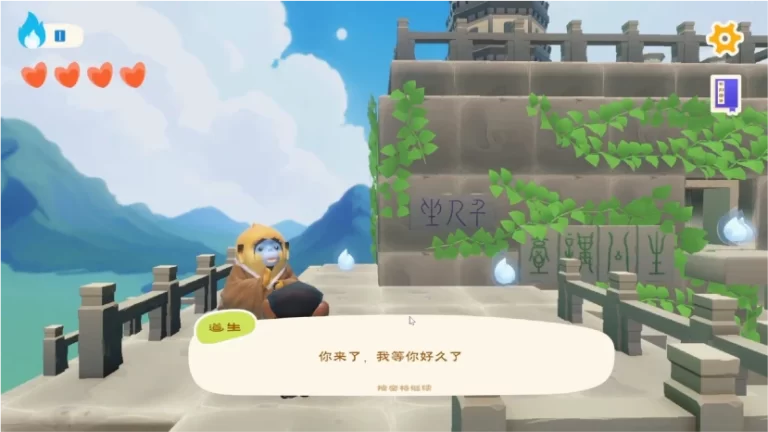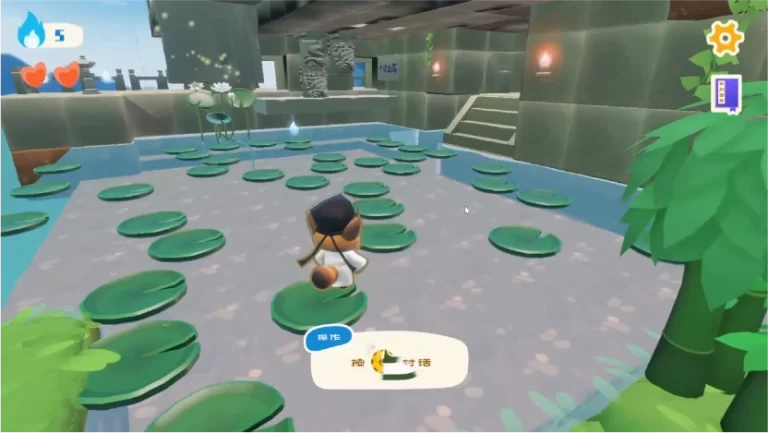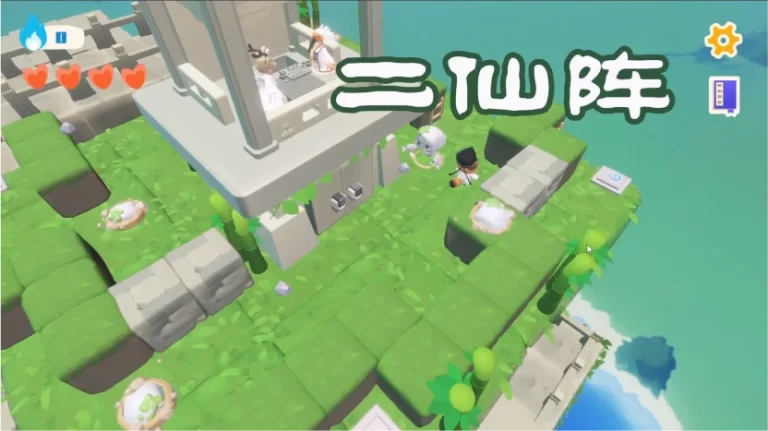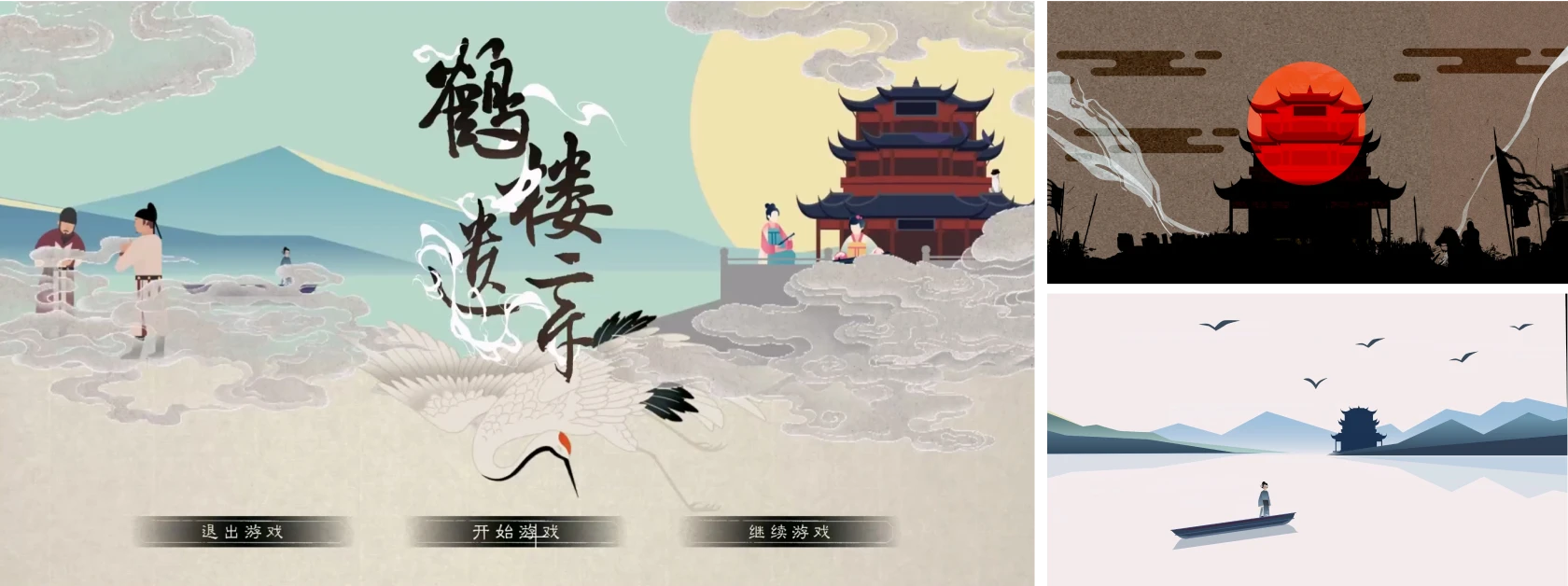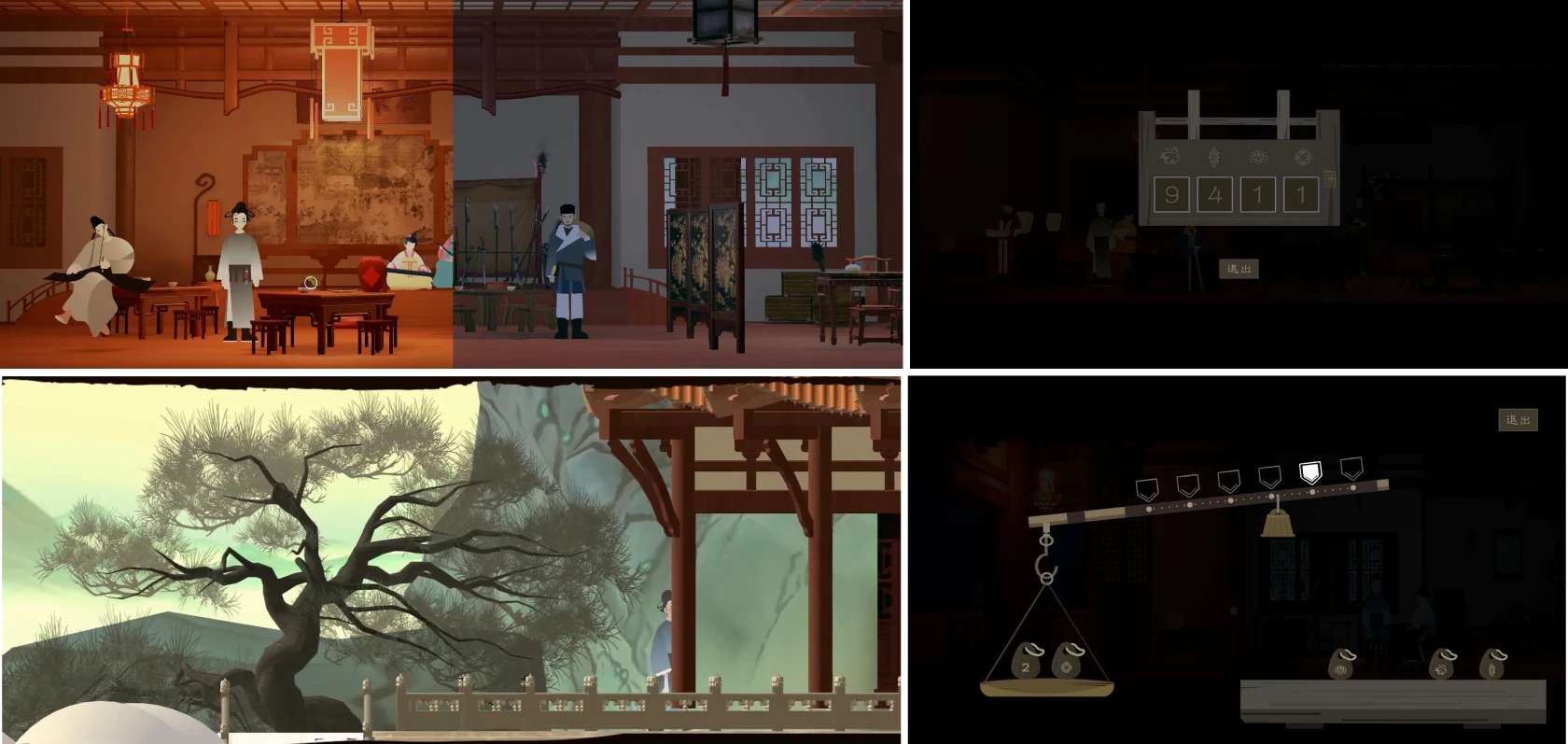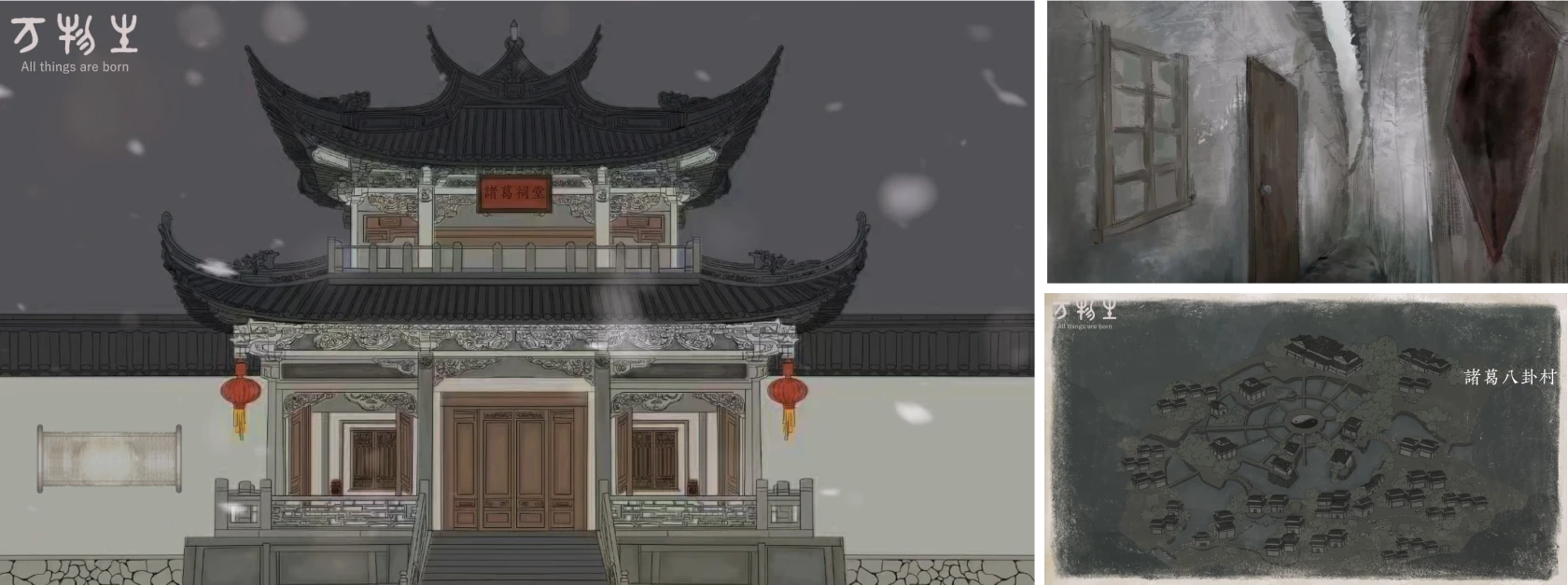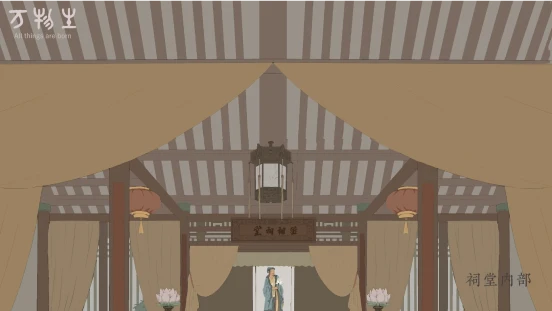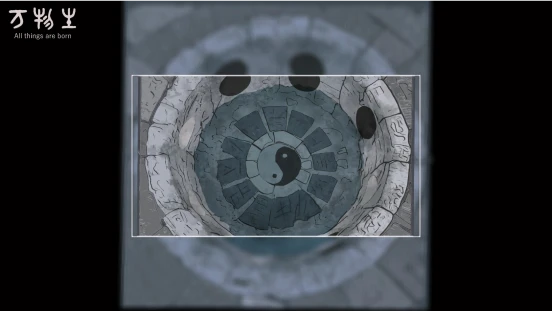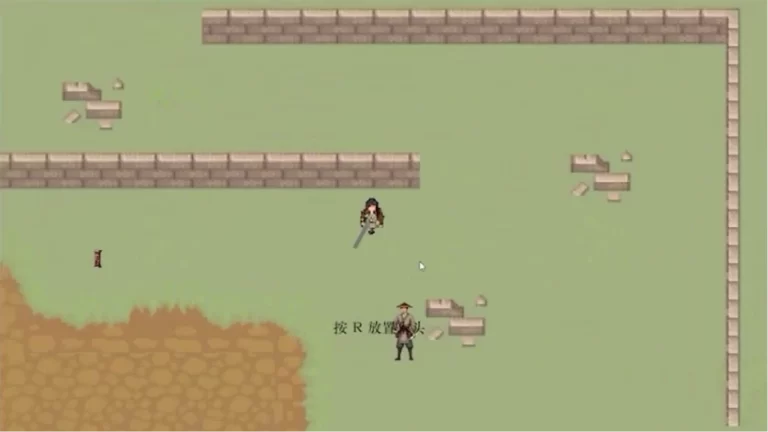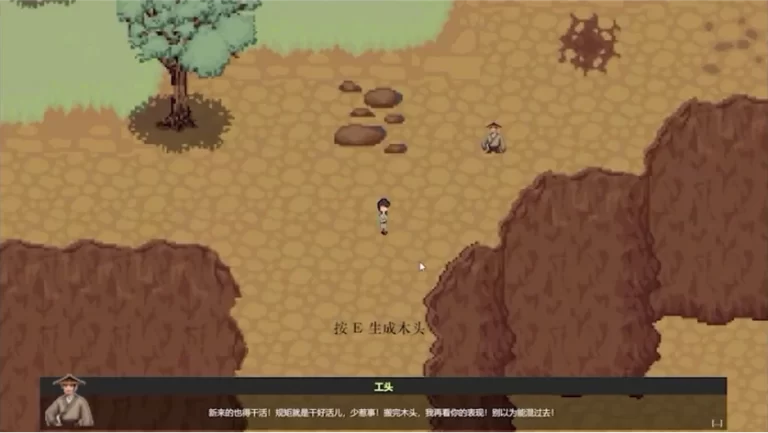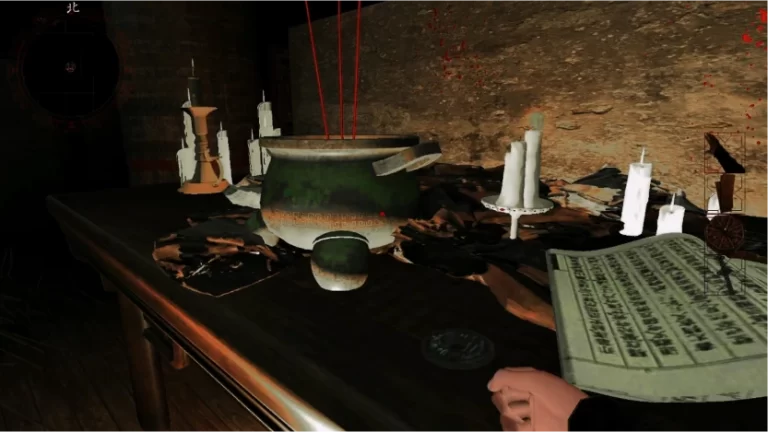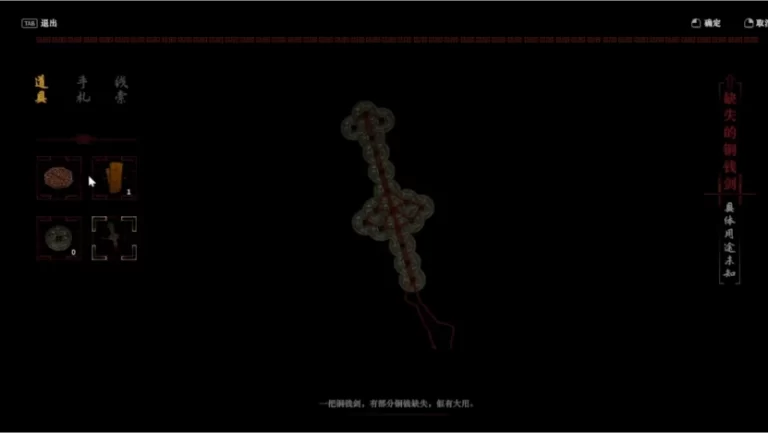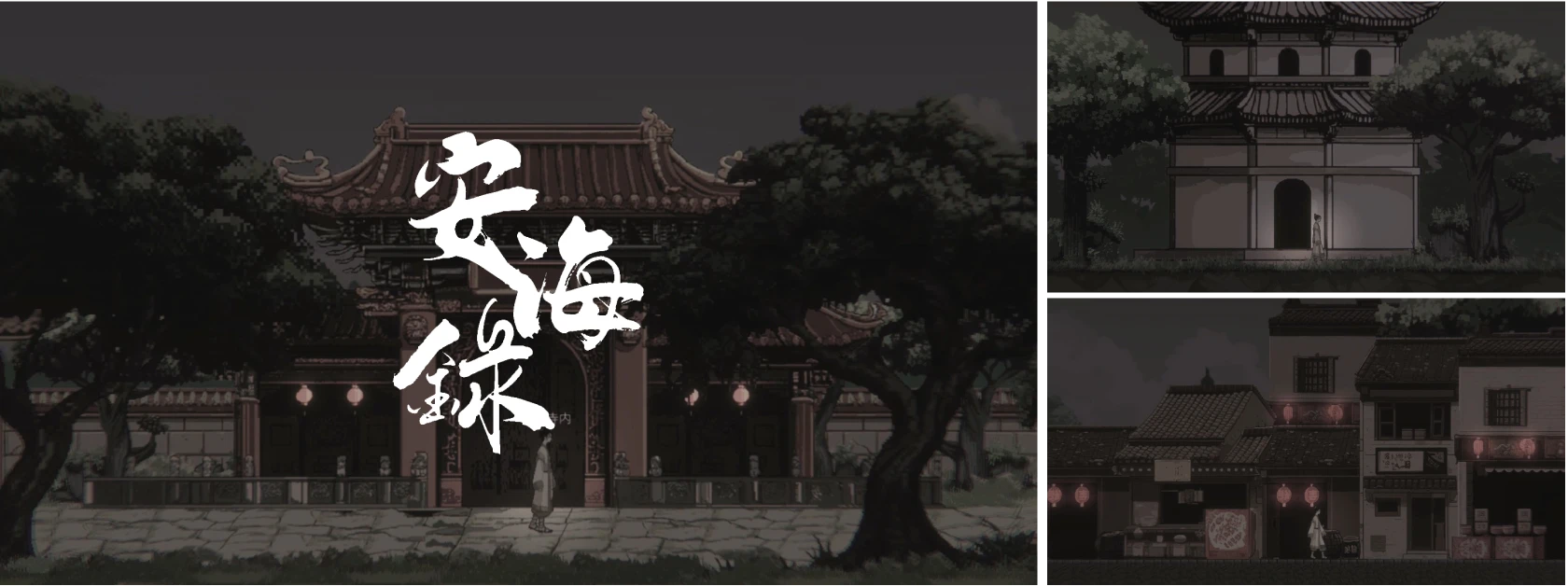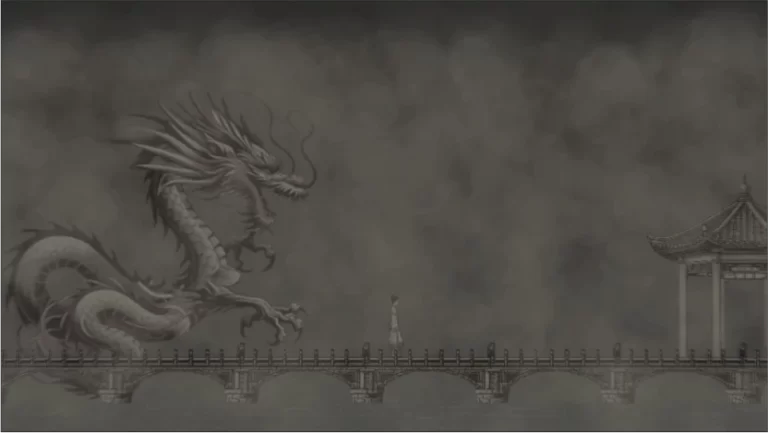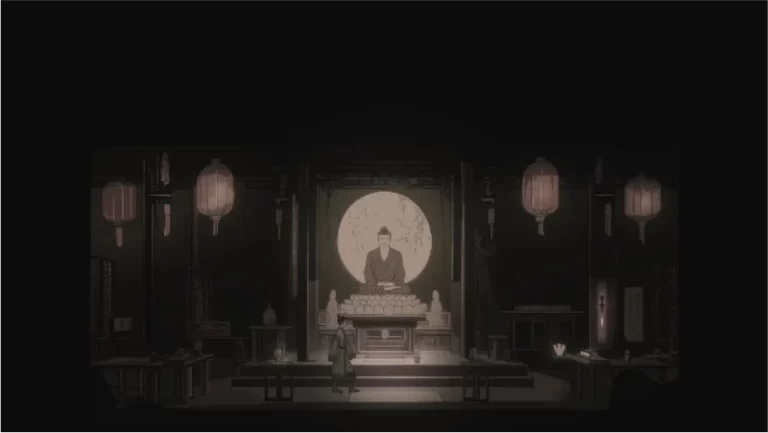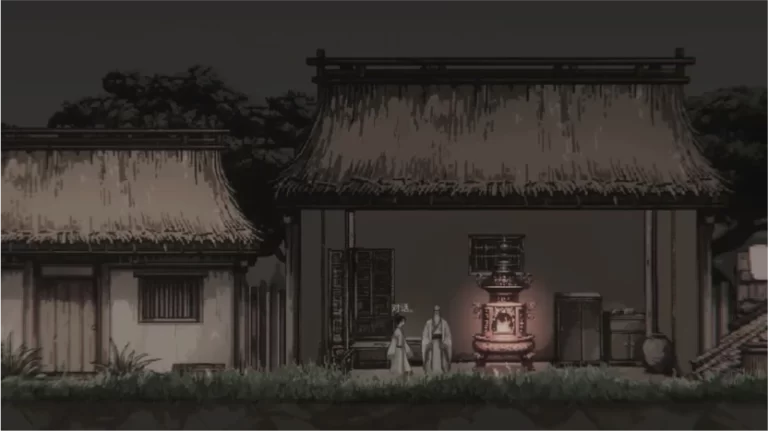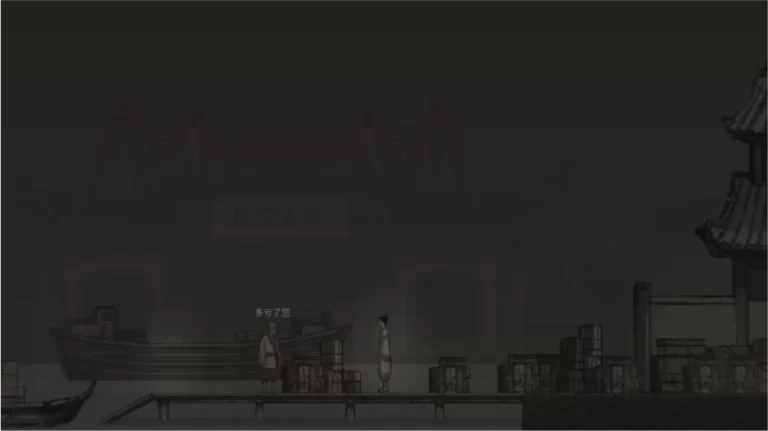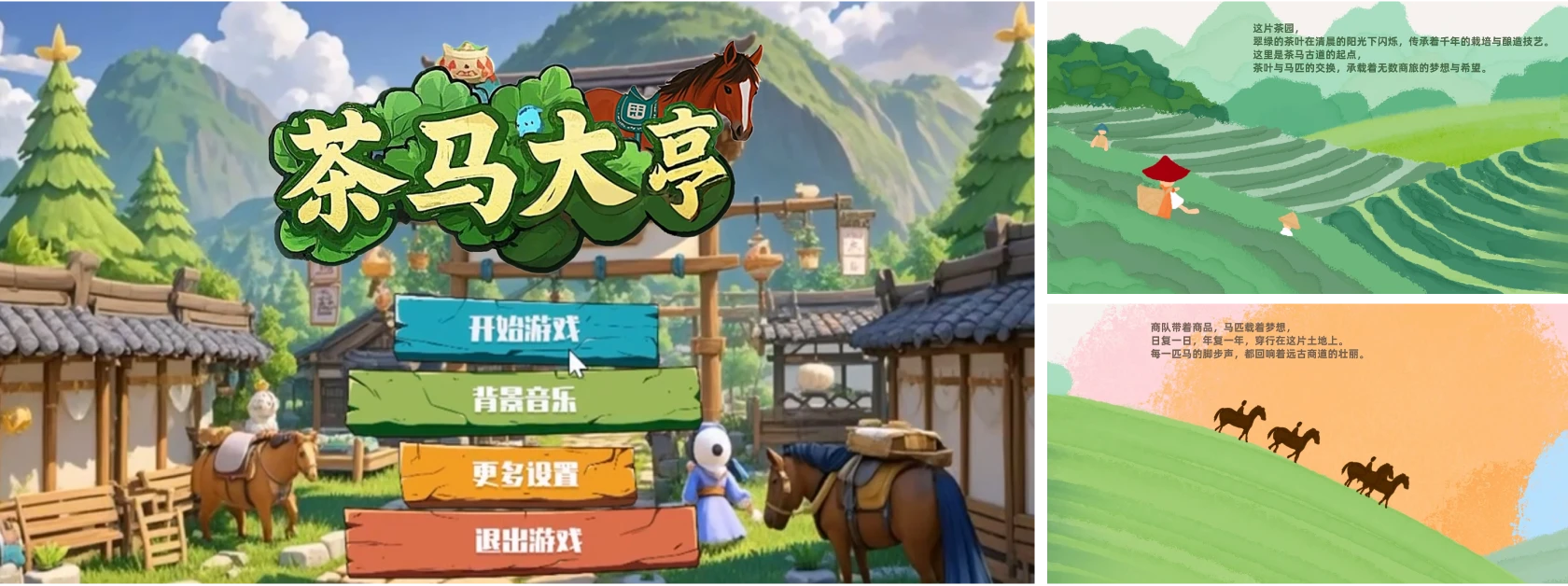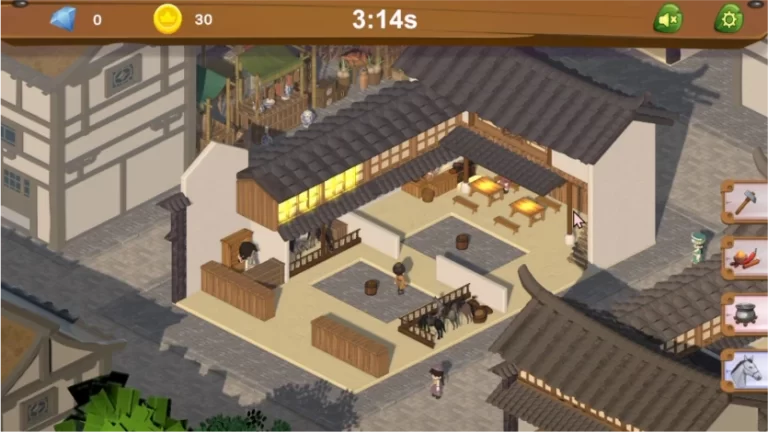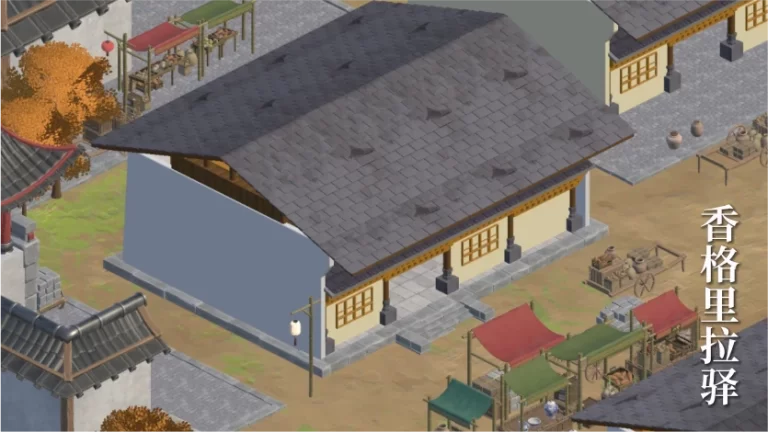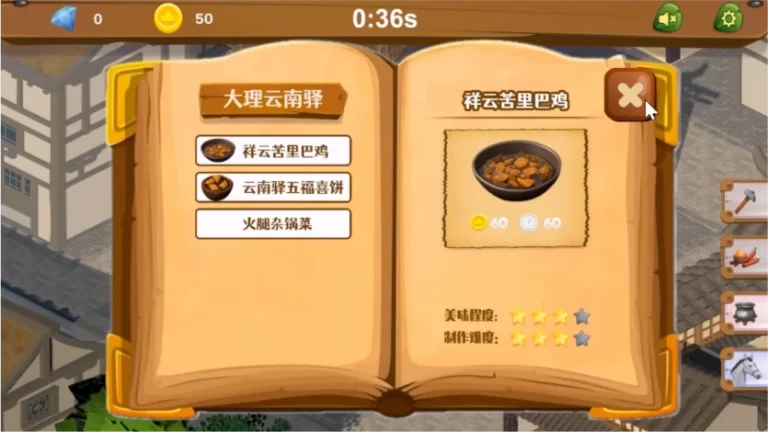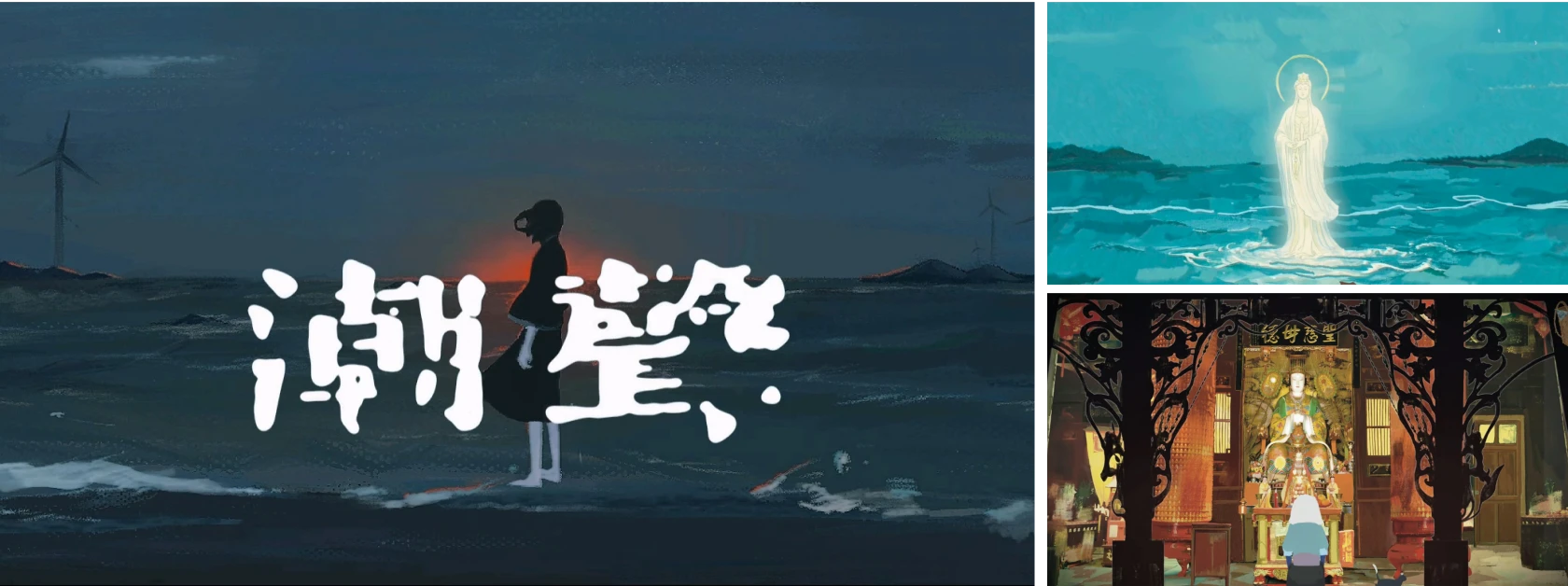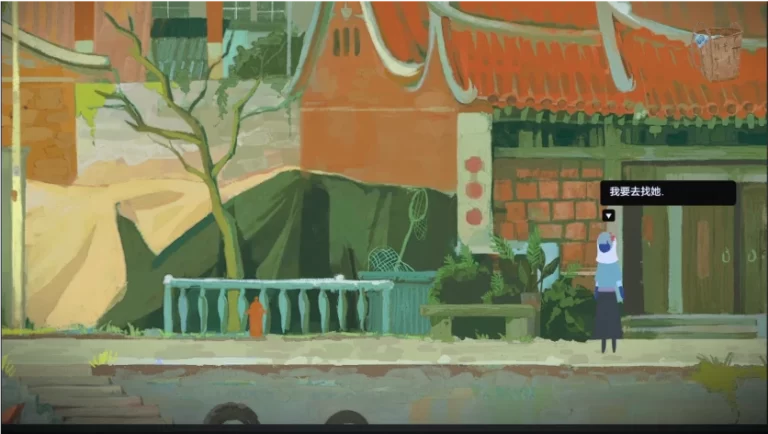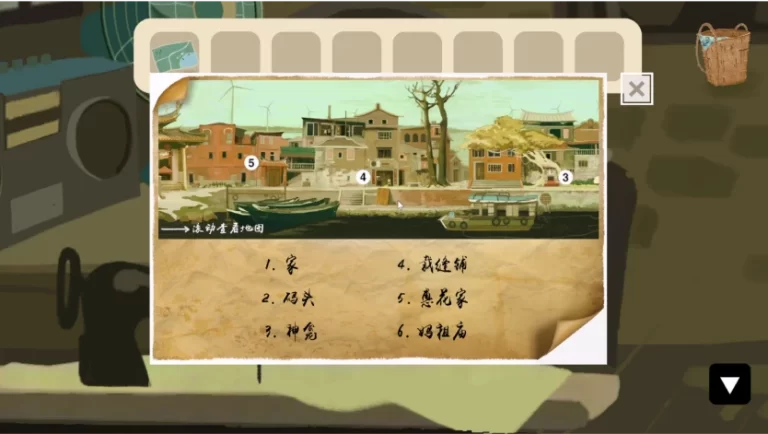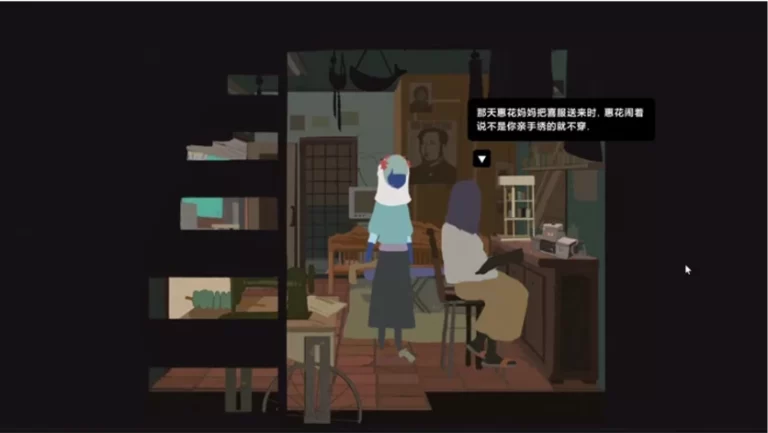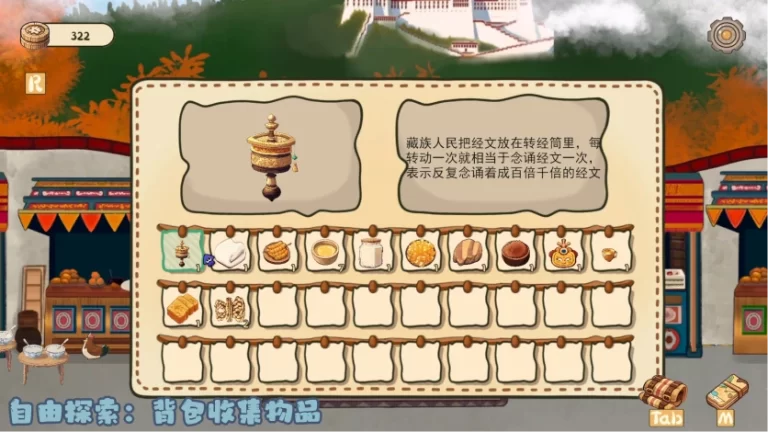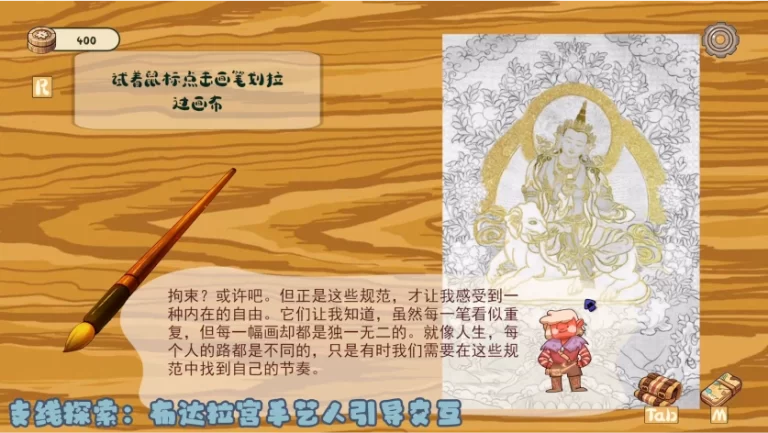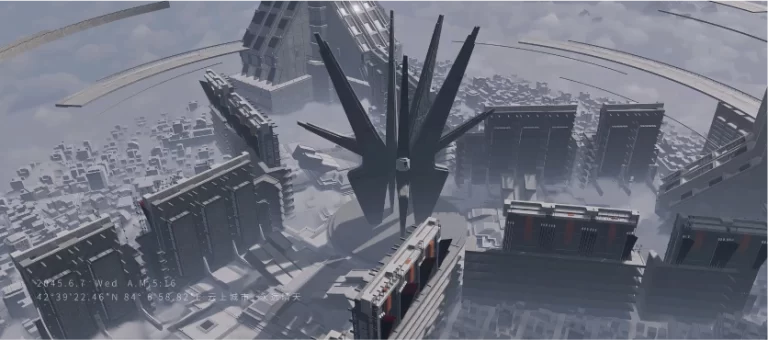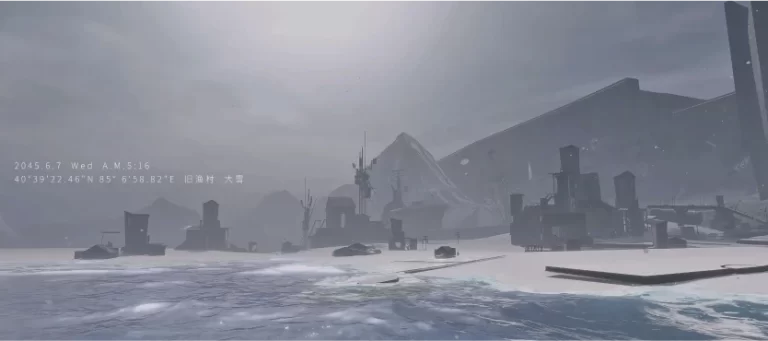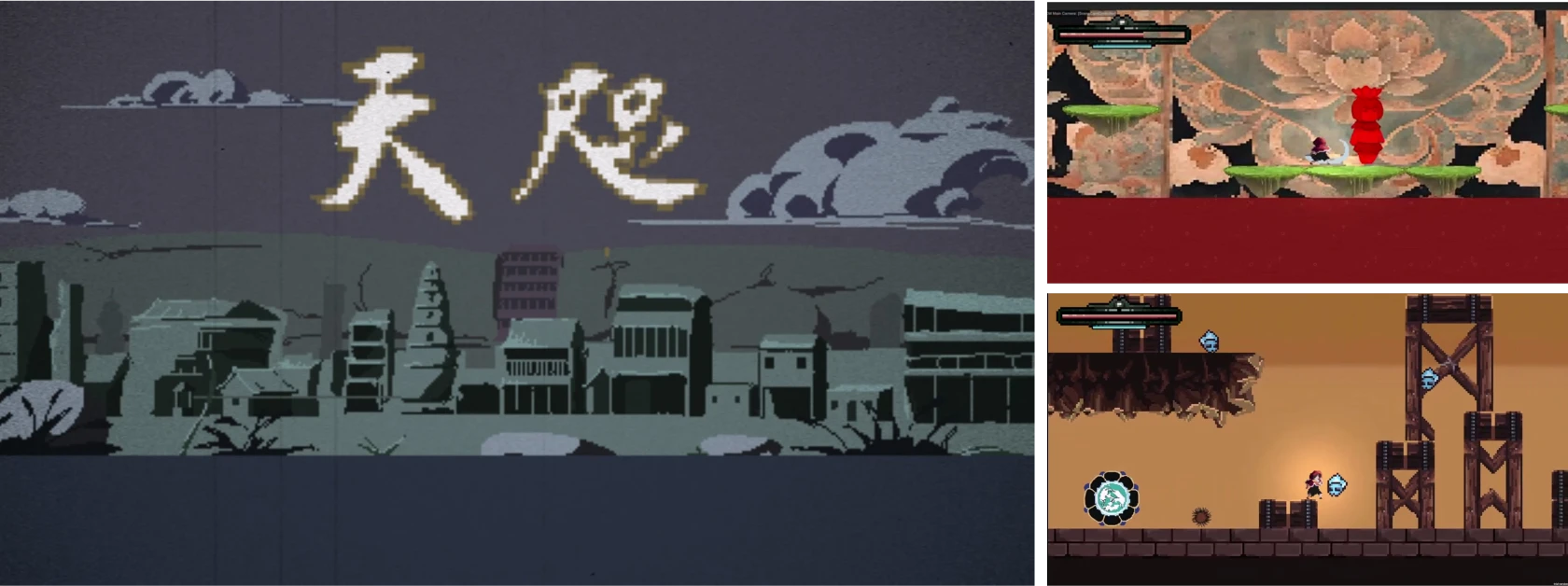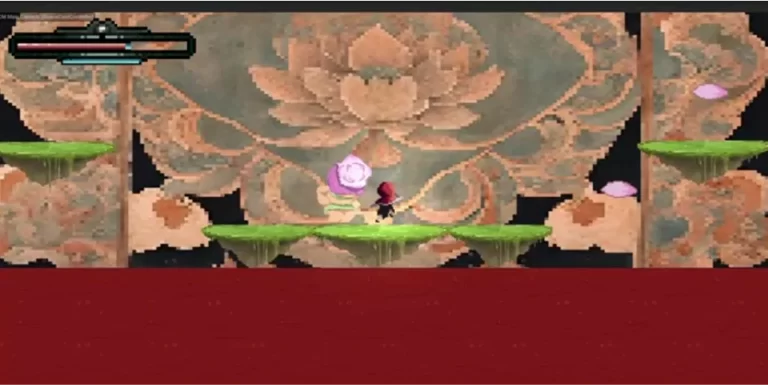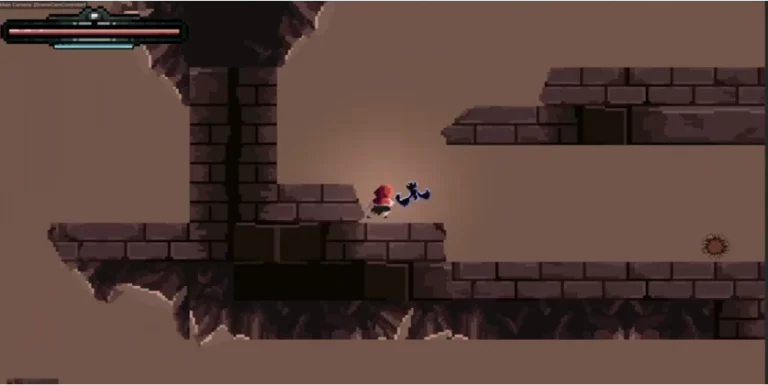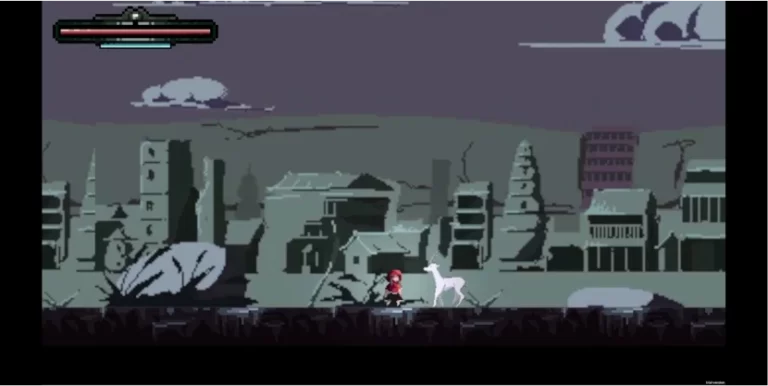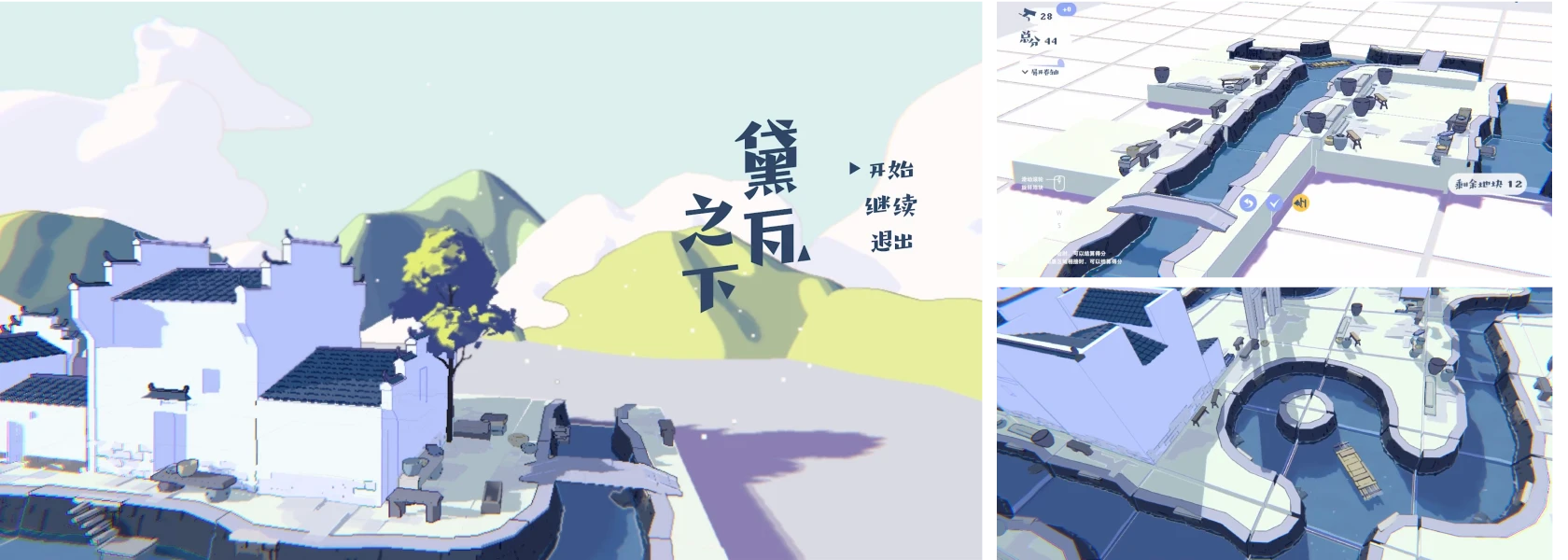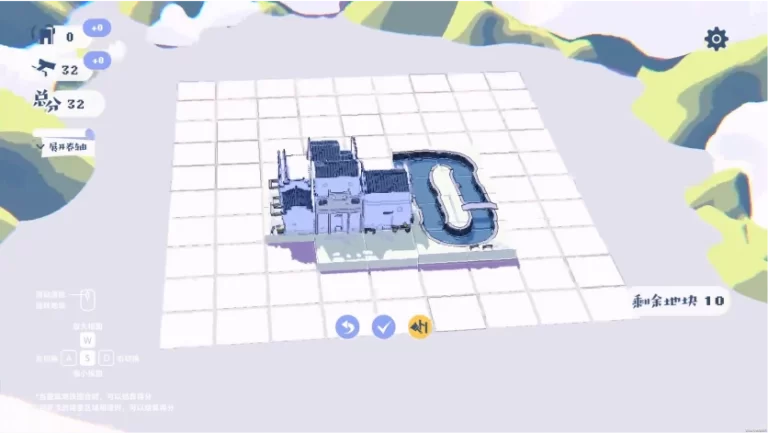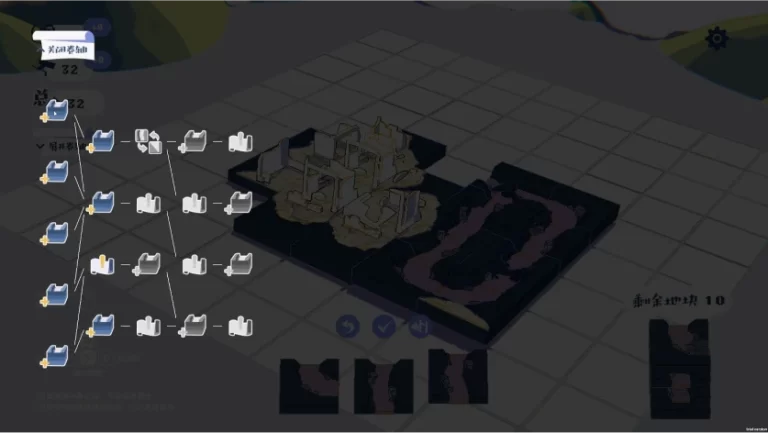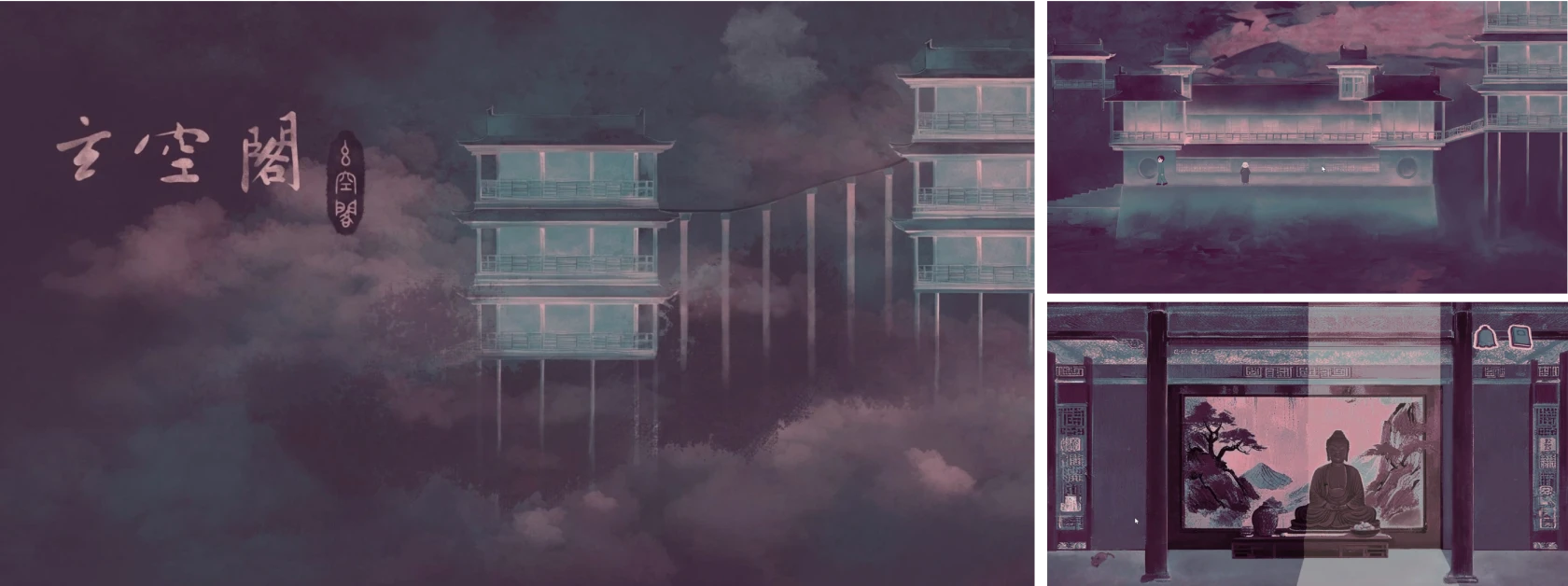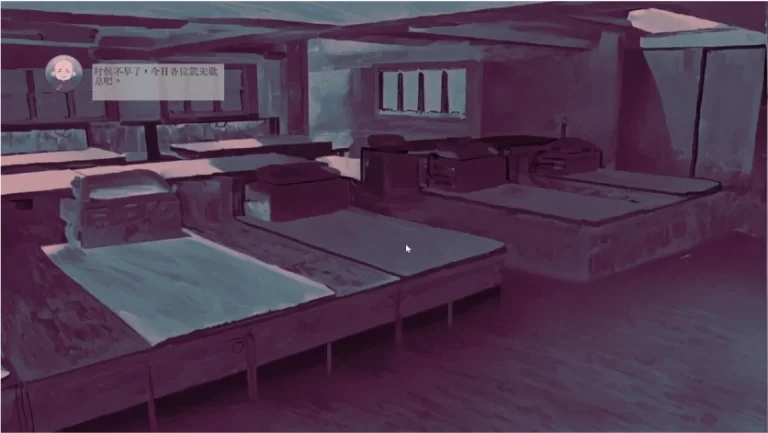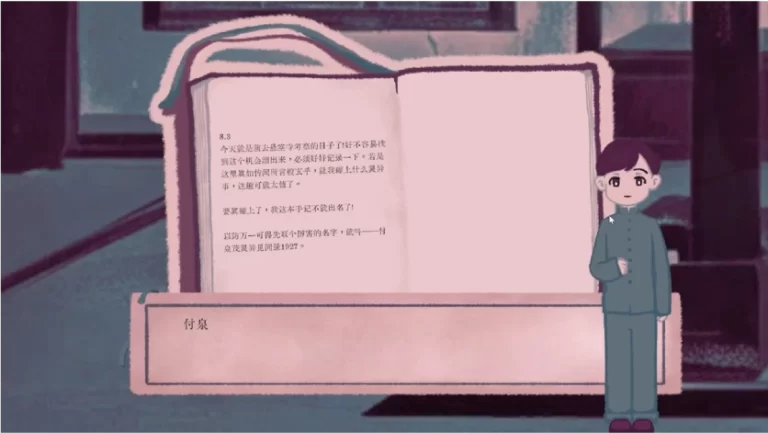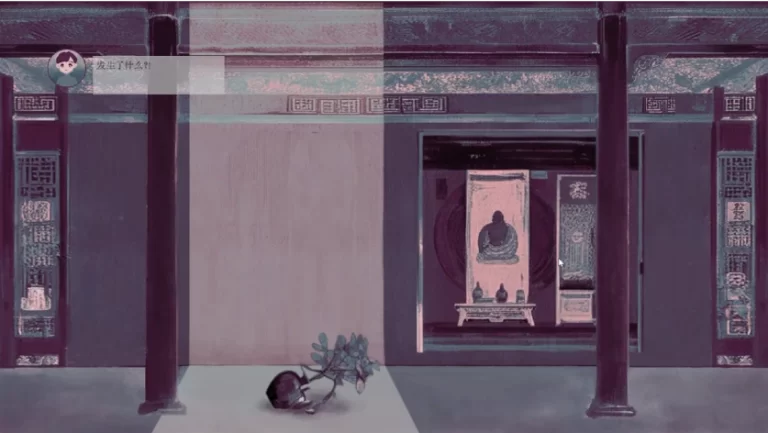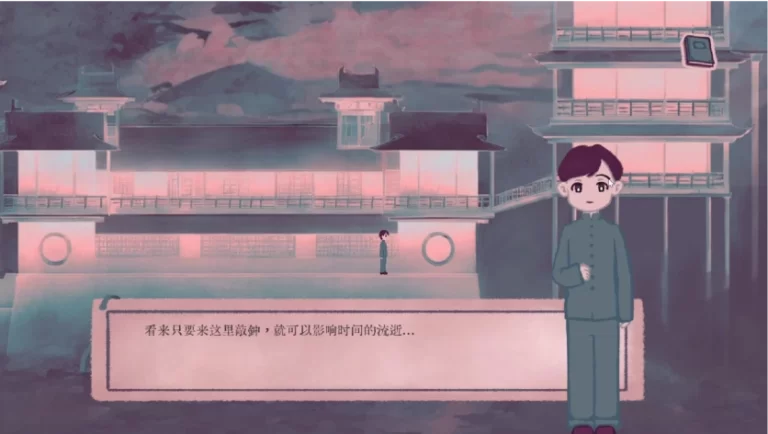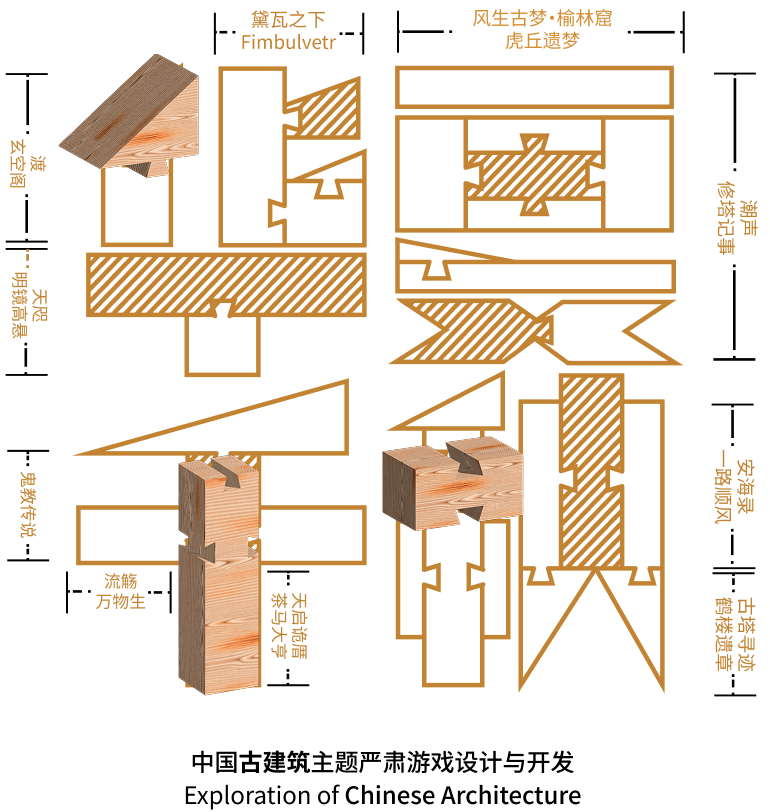




Yulin Caves Digital Preservation Team / Yirui Zhang, Junjie Pan, Jiajie Chen, Yutong Chen, Leiying Su, Yufei Song, Xuefa Han





In the game, the player Xiao Di will sequentially encounter A Sang and two other spirits, completing the main quests by mastering the art of controlling the spirits, collaborating with them to solve puzzles, and guiding their souls back to their homeland; as well as side quests to piece together A Sang’s complete wishes from his life and uncover the truth behind his unexpected death after leaving his hometown. The game follows A Sang’s life journey, dividing the storyline into five chapters: the first two chapters serve as a tutorial for players to familiarize themselves with the controls; the middle three chapters represent key stages in A Sang’s life, symbolizing his childhood village life, his aspiration to study medicine, and his journey to become a village doctor who cures the sick. The core gameplay revolves around using the Soul Bell to drive spirits, combining this with environmental puzzles and obstacles to advance. In addition to this, there are two major core mechanics: First, the Spirit Synchronization Mechanism. Players use a special Soul Bell to control the spirits, with each spirit corresponding to a bell on the bell set, allowing independent control. The synchronization of the spirits is reflected in their movement and interaction with objects, although their actions are limited. Second, the Line of Sight Avoidance Mechanism: players must avoid having the spirits detected by the villagers. When a villager notices a spirit, a warning bar gradually fills above the villager’s head. When the spirit moves out of the villager’s sight, the warning bar decreases. If the warning bar fills completely, the game ends in failure.






In the game, players will travel through the iconic buildings of Lanting, including the Lanting Stele Pavilion, Mo Hua Pavilion, Imperial Stele Pavilion, and Liushang Pavilion, overcoming three challenges to retrieve the Lantingji Xu. The game features two characters, Xiao Xi and the Goose, and players will need to frequently switch perspectives based on the requirements of different scenes. Xiao Xi possesses the skill for detailed tasks such as reading text and can interpret complex clues, while the Goose relies on unique abilities like climbing and diving, along with its distinctive visual advantages to find hidden items. To solve puzzles involving hidden rooms and cryptic messages, the cooperation between Xiao Xi and the Goose is essential for success.
In the game, players need to coordinate actions from both first-person and third-person perspectives. In third-person view, the Goose will actively follow the player’s movements, making it particularly useful for scenarios where both characters need to reach a specific location together. This setup eliminates the need for frequent character switching, allowing players to view the entire situation and manage resources more strategically, balancing convenience with tactical considerations.



The inspiration for the Two Immortals’ Formation comes from the historical anecdote of Lü Dongbin and Chen Tuan playing chess at the Two Immortals Pavilion. In the Two Immortals’ Formation, stone buttons are placed along the path. When players step on these buttons, they can control the rise and fall of stone walls within the formation. By observing the patterns of the stone walls’ movement, players can avoid attacks from small stone monsters along the way and use the stone walls to create a path leading to the Two Immortals Pavilion.
The White Lotus Pond, also known as the Tiger Hill Sword Pond, features random floating lotus leaves. Players need to control Su Dongpo to jump across the lotus leaves, avoiding the danger of falling into the water, and ultimately reach the depths of the Sword Pond where the lotus flowers bloom.
The Winding Path draws inspiration from traditional Chinese gardens, known for their winding paths and ever-changing scenery. Along the exploration path, the game sets up various mechanisms, including the Little Pig Demon, Snake Monsters, secret rooms, stone pillars, and movable stone blocks. The Little Pig Demon patrols a fixed route on the map, and when the player approaches, it will charge at them to deal damage. Players must dodge its attacks by controlling their character. Snake Monsters lie in wait within the mountains and caves, emerging and retracting along a predetermined path.

Rocket Team Traversing the Galaxy / Quqing Zhang, Sijie Liu, Hangjing Zheng, Zhiye Wang, Yiran Wan, Guang Yang


In terms of interaction, the game uses a third-person perspective. Players control character movement using the WASD keys or the arrow keys, press the “I” key to activate time travel, and use the left mouse button to click on objects in the scene to collect them into the inventory. Items from the inventory can then be dragged onto the character or the scene to trigger dialogues. The game levels are designed with a non-linear structure, encouraging players to explore freely. A variety of items and sub-games will gradually reveal the secrets of He Yu’s life.

Please Welcome the Next Team / YiQiu Zhang, QianRou Wan, XiaoXiao Ren, JiaYue Li, YiYang Li


The scene design in the game closely aligns with the actual layout and Feng Shui principles of the Zhuge Bagua Village. While stylized, the game aims to faithfully recreate the village’s appearance. The Origins of All Things not only offers fun and engaging puzzle-solving experiences but also immerses players in the charm and value of traditional culture as they explore and learn. Through this game, players can sharpen their logical thinking and reasoning skills while gaining a deeper understanding and appreciation for the profound richness of Chinese traditional culture.



In these side quests, players will journey back to the ninth year of the Zhen Guan era, the second year of the Long Shuo era, and the tenth year of the Tian Bao era, where they must obtain mirror shards through various roles and tasks. In the ninth year of the Zhen Guan era, players take on the role of a laborer working on the construction of the Daming Palace, completing tasks while under the watch of supervisors and guards. In the second year of the Long Shuo era, players become a royal physician, sneaking into the palace to treat the empress while avoiding the surveillance of palace maids and eunuchs. In the tenth year of the Tian Bao era, players assume the role of a treasury official, escorting treasures and evading soldier patrols.
As players collect more shards, they will unlock the ability to switch between historical periods, freely navigating the Daming Palace across different eras. Players can use the changing terrain across time to avoid guards, ultimately gathering all the shards to uncover the secret of the mirror. Each era’s map has its own unique architectural style, from the initial construction of the Daming Palace to its peak, and then to its post-destruction ruins. As players progress through the historical changes, they will unlock new challenges, refine their strategy, and improve their stealth skills, ultimately completing the game’s tasks.

Big House, Big Blunder / Jiayun Cai, Xinyu Dang, Xinyue Liu, Leyi Wang, Zhixing Lin, Mingyuan Fan



Game Try and Die / Liwen Wang, Shinian Gong, Jingyi Hu, Peiqi Chen, Jingmei Chen, Foqing Zhu


In terms of interaction, players can perform basic movements and jumping, as well as use a dash skill to dodge long-range attacks from evil spirits. They can defeat the spirits through attacks or talisman-based abilities. Players can also use a special item, the “Vajra Bell,” which, when combined with a mysterious force, releases a protective shield, allowing them to walk across the poisonous Anping Bridge. This is not only a necessary condition for crossing the bridge but also one of the core abilities for dealing with subsequent boss fights.
During the seal restoration phase, a raft will automatically follow the player, docking at designated restoration points and waiting to trigger the seal interaction. The repair process incorporates the traditional bridge-building technique of “sleeping wood and sinking foundation,” and is presented to players through animated sequences that showcase ancient bridge-building craftsmanship. As the seal is progressively restored, players will face the ultimate challenge—the confrontation with the final boss. After defeating the boss, the player will complete the final seal and bring the story to a close.

Let’s Be Rich / Jiayi Sun, Yuxuan Zhong, Jiachun Chen, Erjie Jiang, Zikai Shen



lalaland / Jinyi Han, Jiayang Hang, Yunxin Chen, Congying You, Yiting Liu, Lingjie Pan



Luo Bu Luo Bu / Se Li, Jingyi Xu, Lisa, Lingyu Wang, Xiyun Cui, Xiuyan Lin











In terms of interaction, the game uses a slightly perspective-driven telephoto camera. Players can select tiles to place using the A and D keys, and adjust the camera zoom with W and S keys to better observe the overall village landscape. Additionally, when buildings or connected rivers are formed, players are given a visual transformation of the buildings from old to new, providing positive feedback. In Under the Dark Tiles, the game draws inspiration from Huizhou-style architecture and features over twenty distinct tiles that showcase the unique characteristics of Huizhou architecture, allowing players to freely explore and build within this world.



For the specific puzzle levels, the game is designed with light as the central element: light serves as a trigger for the intertwining of time and space. During the limited hours of sunlight in the Hanging Temple each day, areas illuminated by light will present the layout of 1927. Players control the window shutters to adjust the lighting in the room, using the differences in the status and arrangement of objects depending on whether they are illuminated or not to solve puzzles and gather journal clues.




